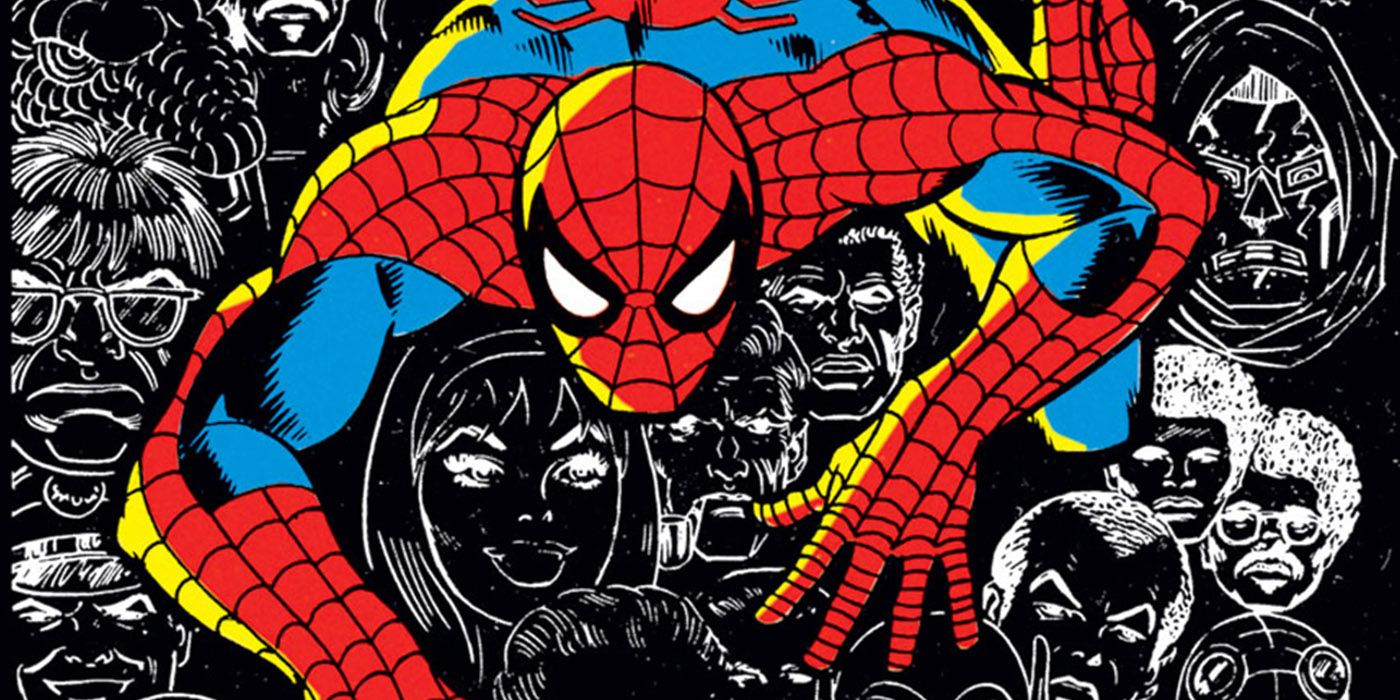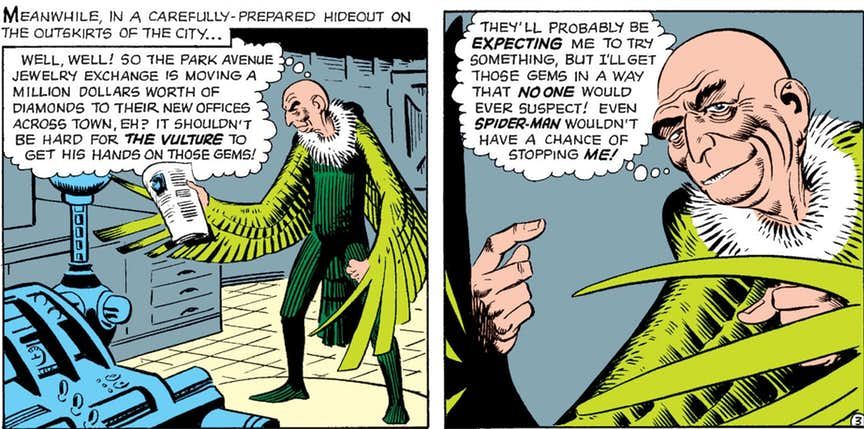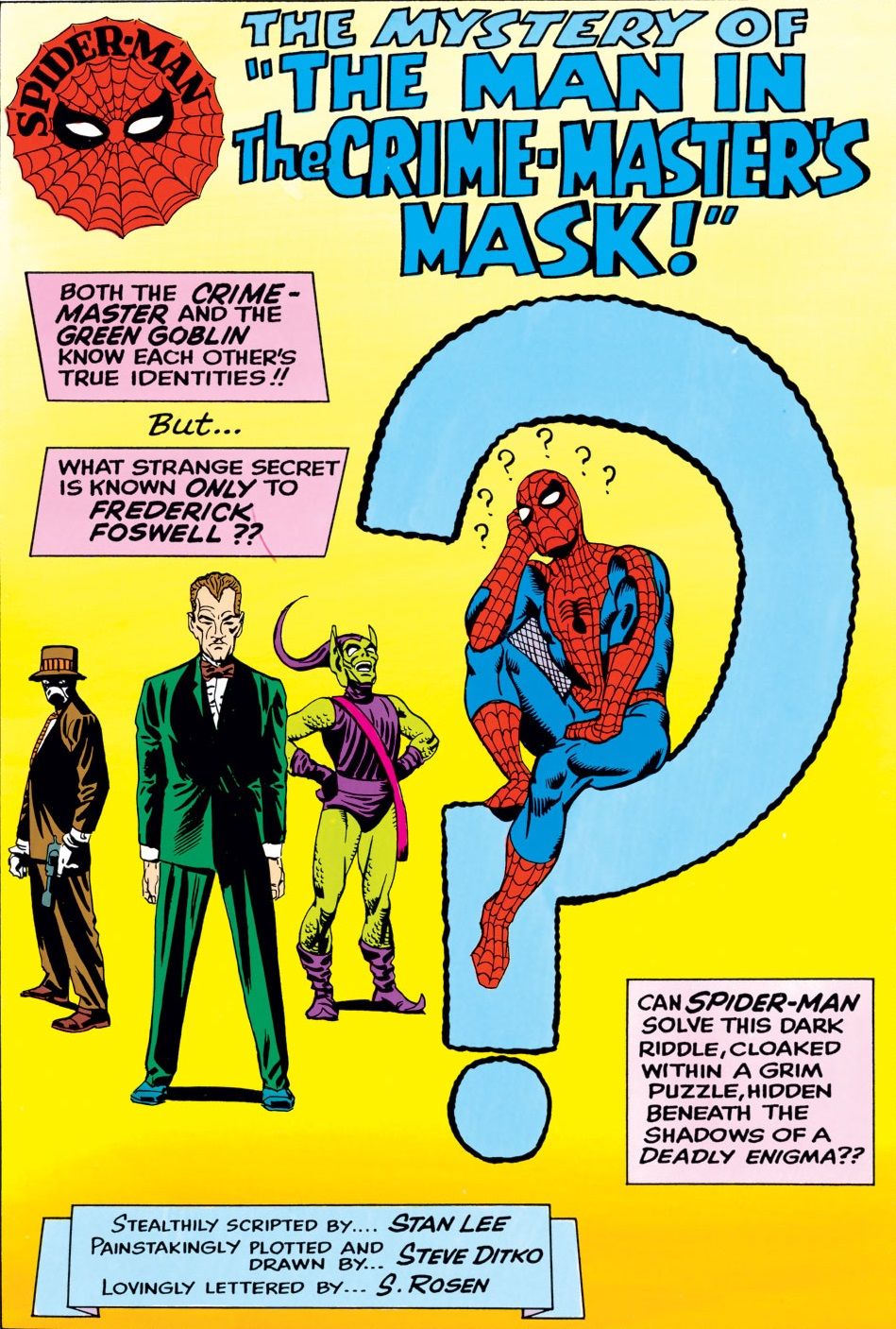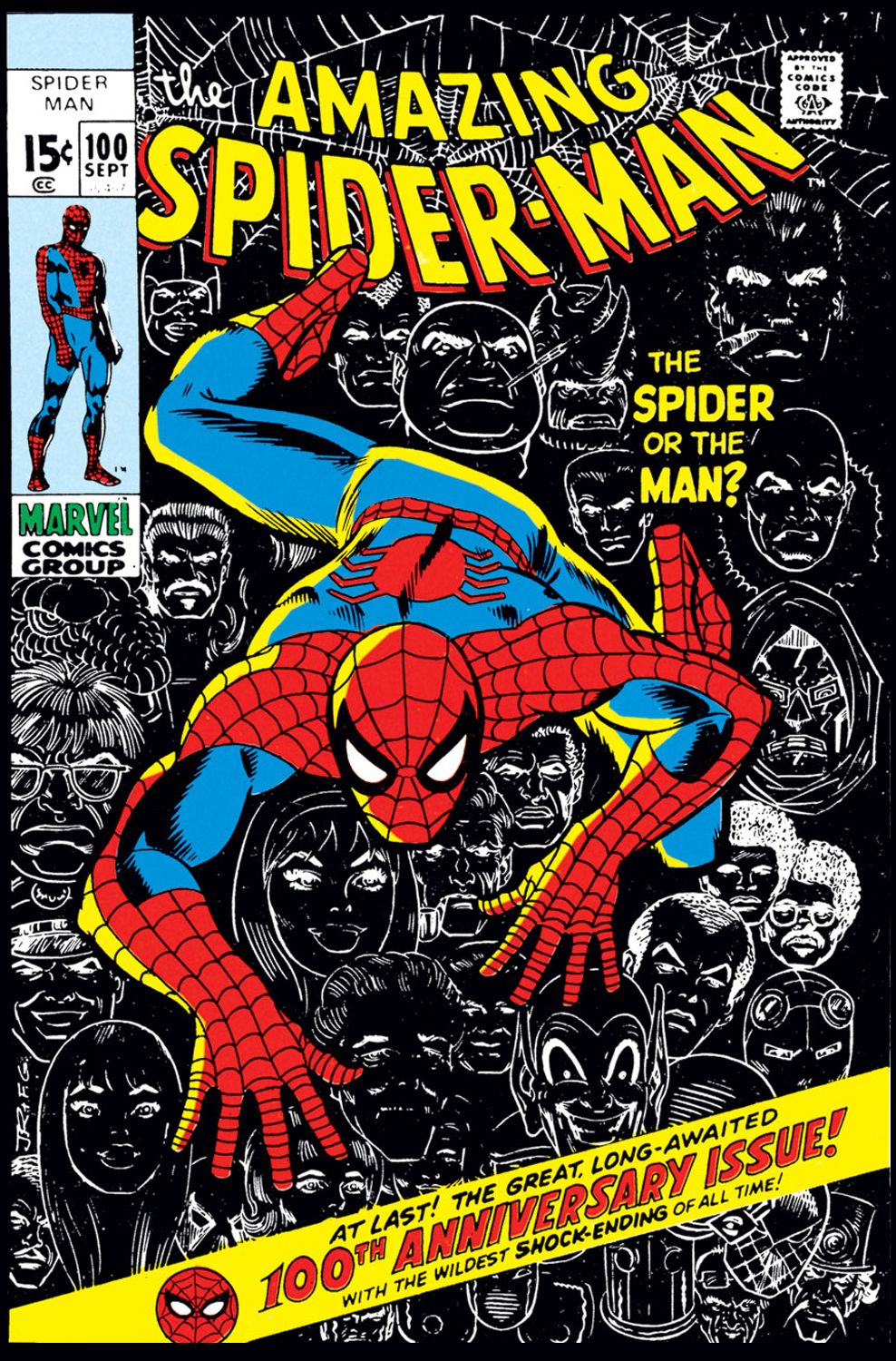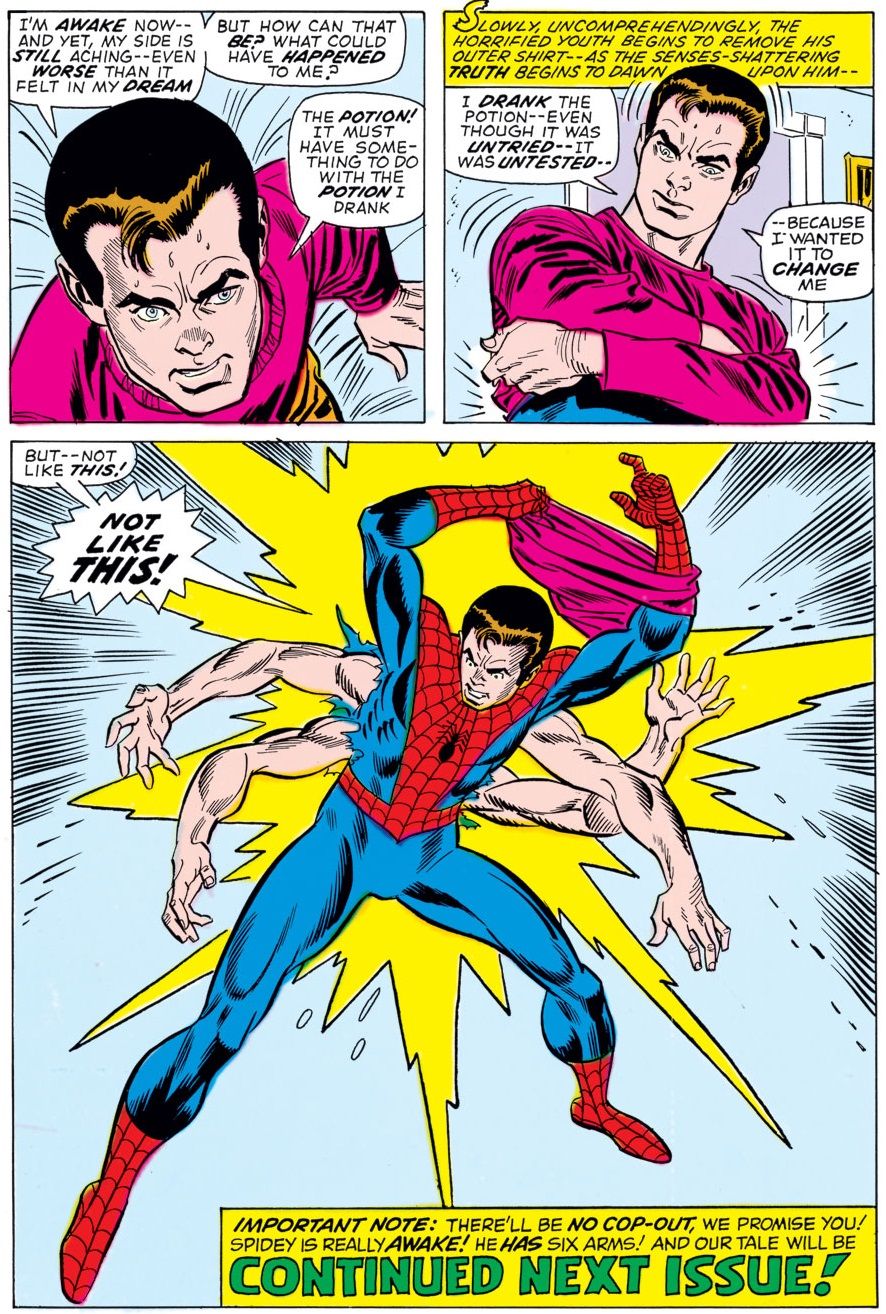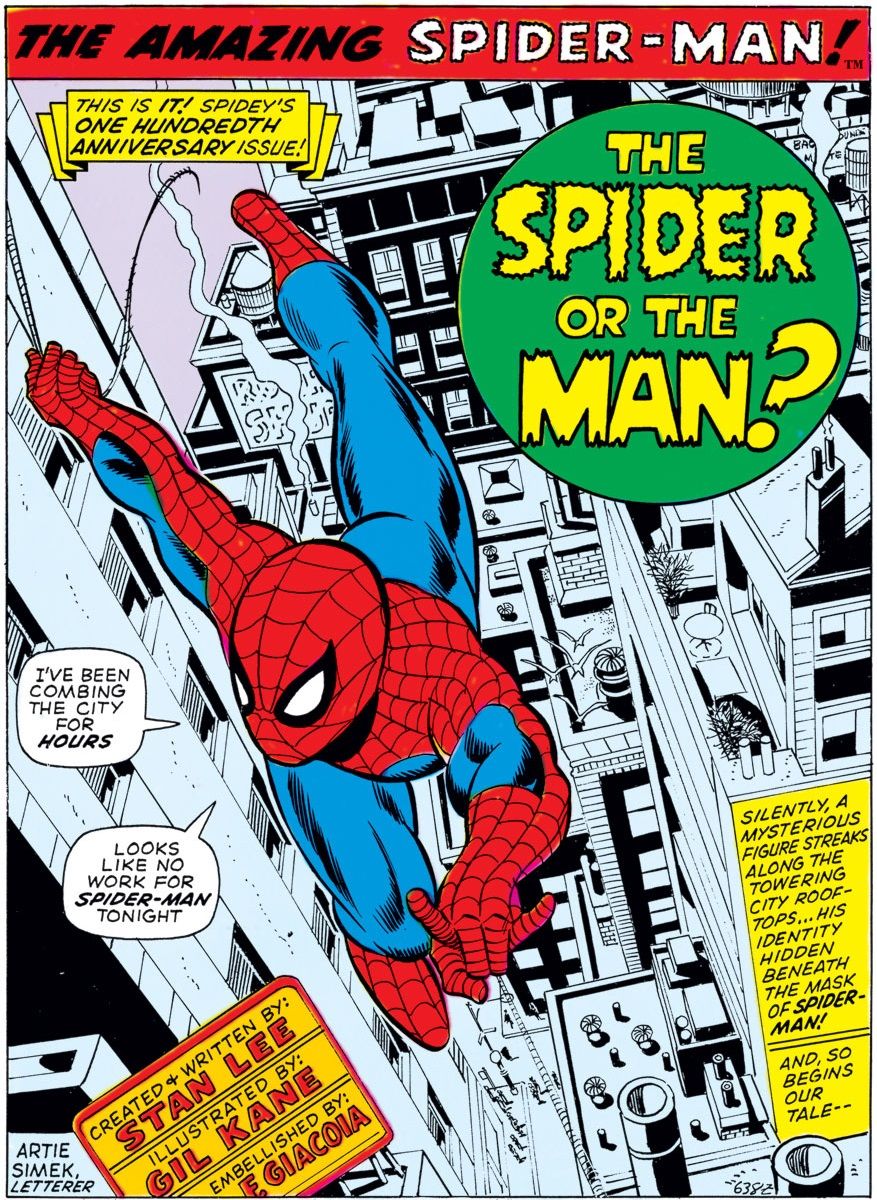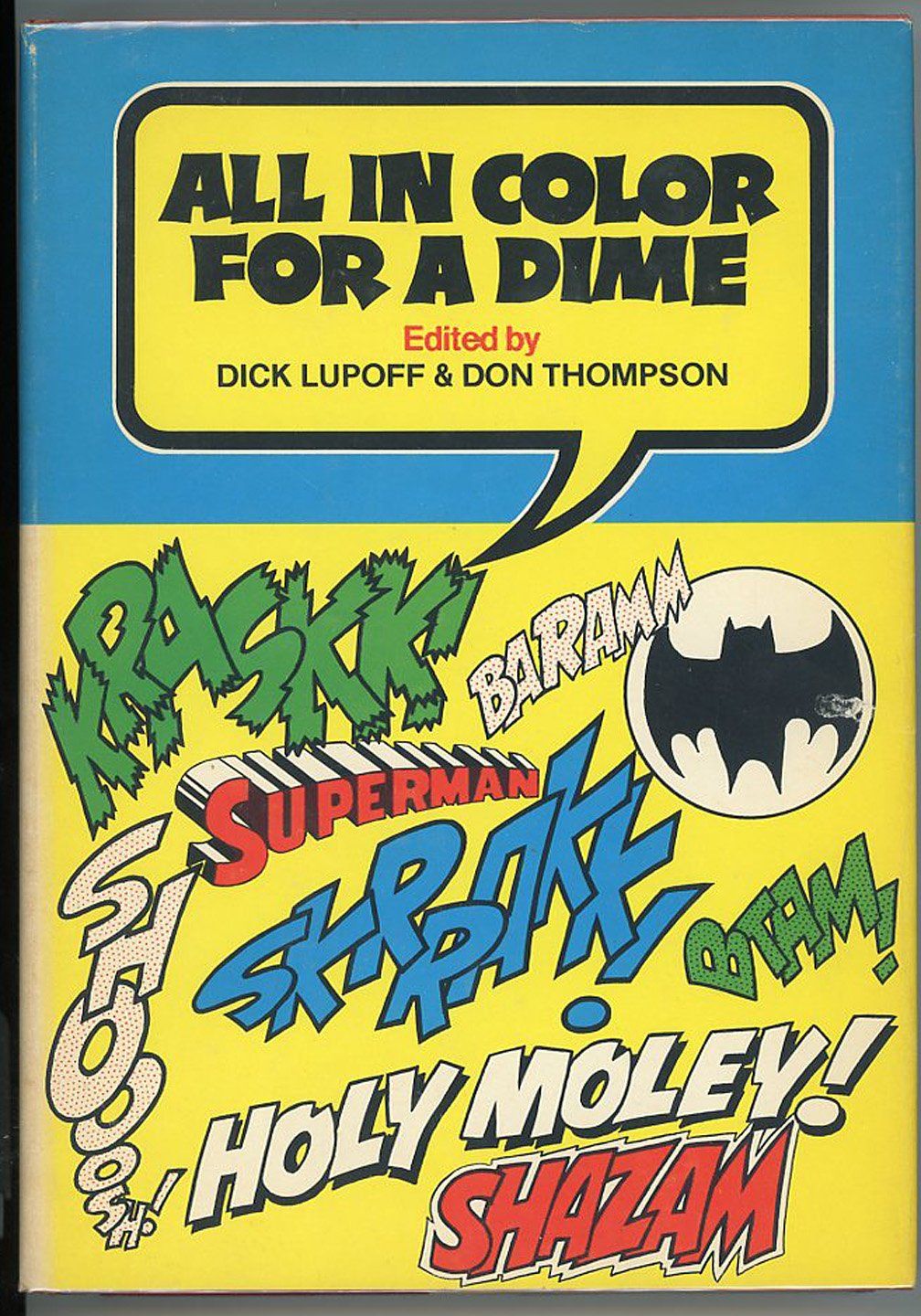In the latest Comic Book Legends Revealed, discover the strange circumstances behind Stan Lee getting a "created by" credit in Amazing Spider-Man #100
Welcome to Comic Book Legends Revealed! This is the eight hundred and forty-ninth installment where we examine three comic book legends and determine whether they are true or false. As usual, there will be three posts, one for each of the three legends.
NOTE: If my Twitter page hits 5,000 followers, I'll do a bonus edition of Comic Book Legends Revealed that week. Great deal, right? So go follow my Twitter page, Brian_Cronin!
COMIC LEGEND:
A reference to Steve Ditko creating Spider-Man led Lee to add a "creator" credit to his credits in Amazing Spider-Man #100.
STATUS:
I'm Going With True
I know this is going to sound so obvious that it's almost not worth saying, but it's important for the rest of the piece to establish it, so let's get it out of the way - credits for creators are a big deal in comic books (and, honestly, in most creative fields). Credit was a big issue with the original creative team of Amazing Spider-Man, Steve Ditko and Stan Lee, the two guys who co-created Spider-Man together in 1962.
In the early days of their collaboration on Amazing Spider-Man, Lee and Ditko would confer on the plot, Ditko would then go out and draw the issue and Lee would first request changes and then, once the changes were made (or Ditko successfully argued against the change), Lee would add dialogue to Ditko's pages. Lee was always fairly deferential to Ditko's views on things, but at the same time, Ditko would still have to clear things with Lee, which would often lead to re-drawn pages. For years, Lee had maintained the so-called "Marvel Method" of him coming up with a plot with the artists, them drawing that plot and then Lee adding dialogue to the finished pages. That worked a lot easier when Marvel Comics stories were short seven-page stories in anthologies. For a seven-pager, a basic plot can carry most of the pages. When comic books became full-issue stories, Lee was now expecting the artist to come up with a lot of extra plot to fill those pages.
He would defer more and more to the artists that he trusted, like Ditko and, of course, Jack Kirby. Therefore, when, say, the Vulture was introduce and Lee wanted the character to look bulky, it was Ditko who said no and Lee went with Ditko. Ditko later explained his decision, “He once mentioned the movie villain, Sydney Greenstreet, as a villain model. So Stan didn’t like my thin, gaunt Vulture. An elephant’s bulk can be frightening and destructive, but it is easier to escape from than the lean, fast cheetah. The bulkier anything is, the more panel space it has to take up, thereby shrinking panel space for other characters and story panel elements.”
Spider-Man became a sensation, but his popularity was a bit confounding to Ditko. Here, the character was getting bigger and bigger, and yet he still had to defend his choices on every story. Finally, he demanded that he be credited as the plotter of the series and Ditko and Lee also worked out an arrangement where Lee and Ditko no longer directly spoke to each other (there is a dispute over who actually instigated this "no more speaking to each other" setup. Ditko latrer claimed it was Lee who said he wouldn't speak to Ditko anymore because they fought too much, but it also makes a lot of sense that Ditko just didn't want to talk to Lee about the stories anymore). So Ditko would come up with the plots for the issues by himself, send them to Marvel (with notes to let Lee know what was going on) and Lee would then add dialogue and that was that (Sol Brodsky would be the intermediary. Do note that Martin Goodman would still tell Ditko when he wanted changes in the stories).
This new set-up began in Amazing Spider-Man #25, but it wasn't until the next issue that Ditko got his new credit...
That was big. That was more than Lee even gave Jack Kirby on Fantastic Four (there, Lee went with a simple "Stan Lee and Jack Kirby" joint credit as his concession to Kirby wanting similar credit).
Okay, so Ditko leaves the book anyway, and John Romita takes over as the regular artist (and, very quickly, the main plotter on the series). Gil Kane would follow Romita on the book, and finally we got to Amazing Spider-Man #100, the final issue of Stan Lee's original run on the series.
This is the story that famously ended with Spider-Man experimenting on himself to try to rid himself of his superpowers and instead giving himself extra arms!
In any event, the first page of the issue had unusual credits, as now Stan Lee had himself listed as "Created and Written by"....
That's an unusual credit for Lee, as he had never credited himself that way before. As it turns out, there was almost assuredly a very good reason for the credit.
Bob Beerbohm wrote about the credit on his Facebook page, and one of his Facebook friends, Ferran Delgado, wrote in with some fascinating information.
You see, in 1970, Don Thompson had the chance to do a new, expanded edition of his All In Color for a Dime book of comic book history...
This new, expanded edition, had entries on the Marvel heroes of the 1960s, as well.
Well, in his zine, New Fangles, Thompson either wrote an article ABOUT Spider-Man's creation or he featured an excerpt from the book. I'm not sure which (I lean towards the latter). In it, Thompson said Spider-Man was created by Steve Ditko. No mention of Stan Lee.
That was not correct, of course, but Lee demanded a public retraction, as he insisted that HE was the sole creator of Spider-Man, and Ditko only did the art for Spider-Man's debut. That was not correct, either.
Still, in New Fangles #42, Thompson ran the retraction (with more than a hint of sarcasm, I think)...
That was cover-dated December 1970, and Amazing Spider-Man #100 came out in June 1971, so with lead production time, the timing works out too well for me to think it was a coincidence, as, again, Lee had never taken the "created" credit before on the series (granted, it was also his final issue of his original run on the book, so I'm sure that played a part in it, as well, but I don't think we can look past the influence of Lee's dispute with Thompson).
Thanks to Bob Beerbohm and Ferran Delgado for this fascinating information!
SOME OTHER ENTERTAINMENT LEGENDS!
Check out some entertainment legends from Legends Revealed:
1. Was Splinter of the Mind’s Eye Originally Written as a Cheap Film Sequel to Star Wars?
2. Did a Video Game Company Once Sue Viacom For Ruining the Star Trek Franchise?
3. Which Original Cast Member of Grey’s Anatomy Was Added to the Show’s Pilot Through CGI?
4. Did The Hunt For Red October Accidentally Reveal Secret United States Submarine Technology?
PART TWO SOON!
Check back soon for part 2 of this installment's legends!
Feel free to send suggestions for future comic legends to me at either cronb01@aol.com or brianc@cbr.com

